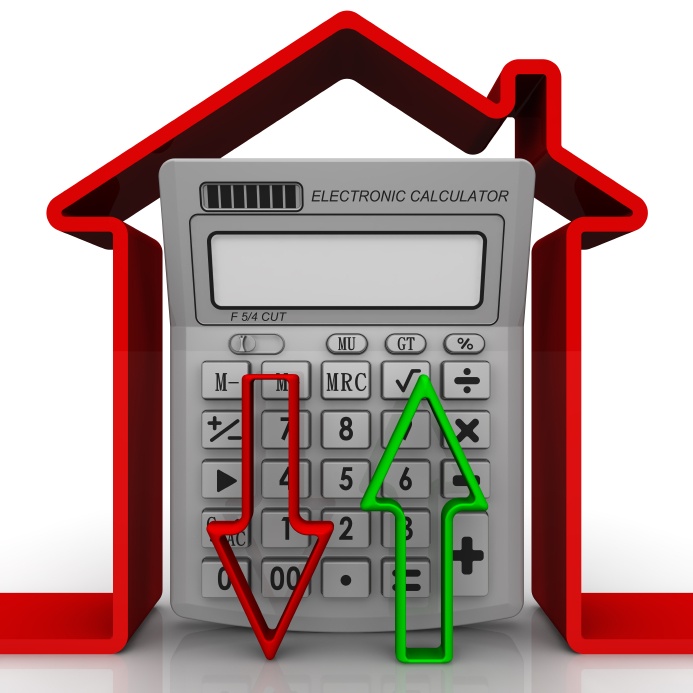Home » Uncategorised »
Annual House Price Growth up to 2.7% in March
This article is an external press release originally published on the Landlord News website, which has now been migrated to the Just Landlords blog.

Annual house price growth reached 2.7% in March – up from the 1.8% recorded in February, according to the latest house price index from Halifax.
This growth resulted in an average house price of £227,871 in March – the highest price on record.
On a quarterly basis, house prices were an average of 0.1% lower in the latest quarter (January-March) than in the preceding three months (October-December) – the second consecutive decline on this measure.
Month-on-month, prices rose by an average of 1.5% in March, following a 0.5% increase in February. However, Halifax notes that monthly changes can be volatile.
At the same time, the report indicates that mortgages in the UK are at their most affordable level in a decade.
Nevertheless, home sales in February (for which the latest figures are available), stood at 101,000 – unchanged on January. In the three months to February, home sales were only marginally lower than in the same period a year earlier.

Annual House Price Growth up to 2.7% in March
After the sharp rise in the number of mortgage approvals – a leading indicator of completed home sales – in January, they dropped by 4.8% in February, to 63,910. Compared to the same time last year, approvals have fallen by 7%.
And there are no signs that the acute shortage of housing stock available for sale is easing. The number of new instructions has now declined for 24 consecutive months – the worst sequence for nine years, with the figure for unsold stock at a record low. For the 11th month in succession, new buyer enquiries have also dropped.
Positively, typical mortgage payments accounted for less than a third (29%) of homeowners’ disposable income in the fourth quarter (Q4) of 2017, compared to almost half (48%) in 2007. This fall in the burden of mortgage payments has helped improve affordability for homeowners, driven predominantly by historically low mortgage rates, despite the first base rate rise in a decade last November.
Comments
Russell Galley, the Managing Director of Halifax, comments on the index: “House prices in the three months to March were largely unchanged compared with the previous quarter. The annual rate of growth continues to be in a narrow range of under 3%; though the average price of £227,871 is a new high.
“Activity levels, like house price growth, have softened compared with a year ago. Mortgage approvals are down compared to 12 months ago, whilst home sales have remained flat in the early months of the year. This lack of direction in the housing market is in stark contrast to the continuing strength of the UK jobs market. The unemployment rate is now the joint lowest since 1975 and, in the three months to January, there were 402,000 more people in work compared to a year earlier.
“In the coming months, we expect price growth to remain close to our prediction of 3%, despite the very positive factors of continuing low mortgage rates, great affordability levels and a robust labour market. The continuing shortage of properties for sale will also support price growth.”
The Founder and CEO of online estate agent Emoov.co.uk, Russell Quirk, also says: “While we have seen a tentative start to the year, it would seem that the spring is starting to return to the step of the UK market where price growth is concerned.
“Although market activity over the first quarter has remained fairly flat, there are signs that momentum is beginning to build, and we should see a degree of stability return over the coming quarter.
“The current affordability of mortgages, coupled with a reduction in unemployment and an insufficient level of housing stock, will continue to stimulate the market, and price growth should exceed wider predictions over the latter part of the year.”
Lucy Pendleton, the Founder Director of independent estate agent James Pendleton, continues: “These numbers represent an impressive sprint finish for the first quarter, even if it does match the annual rate of growth for the last three months of 2017.
“Pent-up demand looks to have been given new life in March, despite one of the worst cold snaps in years. The Beast from the East failed to dent the market in the same way it hurt the services sector last month.
“The Halifax alludes to how low unemployment is fuelling demand, but the quality of the jobs created lately makes Stamp Duty breaks for first time buyers away from London and persistent low mortgage rates the most likely causes.”




